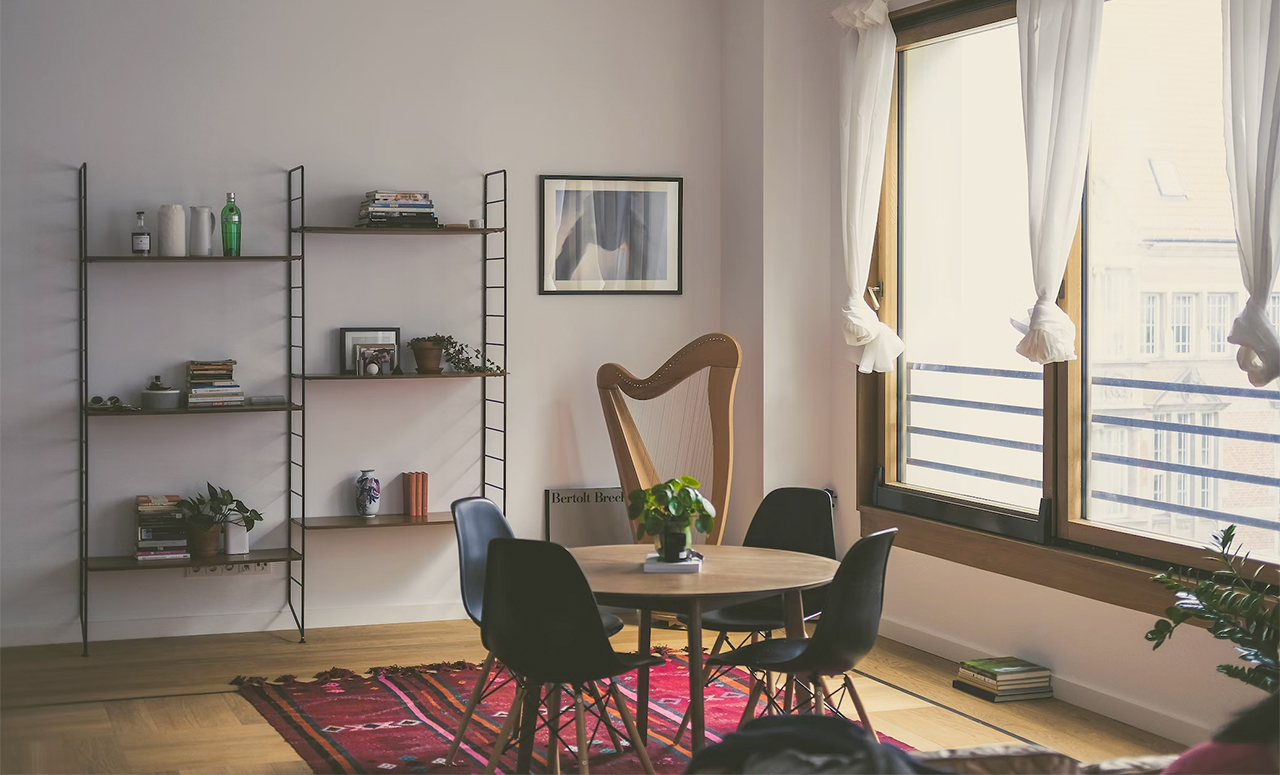The lowdown on secondary glazing: A cost-effective window solution

In the quest for a comfortable and energy-efficient home, windows play a pivotal role. They let in natural light, offer ventilation, and contribute to the overall aesthetic appeal of your living space. However, if you’re facing issues like noise pollution, draughts, or high energy bills due to inefficient windows, it might be time to consider secondary glazing. In this article, we’ll delve into what it is, the cost of secondary glazing, and why it’s worth considering for your windows.
What is secondary glazing?
Let’s start with the basics. Secondary glazing involves adding an additional slimline window pane to the inside of existing windows. This creates a double-glazed effect, providing an extra layer of insulation without the need to replace your primary windows. It’s a popular choice for homeowners looking to improve thermal efficiency, reduce noise, and enhance security without the expense and hassle of replacing their windows entirely.
How does secondary glazing work?
The concept behind secondary glazing is simple yet effective. By installing a secondary pane of glass or acrylic, separated by a small air gap from the existing window, you create a barrier that helps to reduce heat loss and noise transmission. This additional layer of insulation can significantly improve the thermal performance of your windows, making your home more comfortable and energy-efficient.
The cost of secondary glazing
One of the primary concerns for homeowners considering secondary glazing is the cost. While it’s true that secondary glazing involves an initial investment, it’s often more cost-effective than replacing your windows altogether. The exact cost of secondary glazing can vary depending on factors such as the size and number of windows, the type of materials used, and whether you opt for DIY installation or professional fitting.
DIY vs Professional installation
If you’re handy with tools and confident in your DIY skills, you may be able to save money by installing secondary glazing yourself. DIY kits are available from various suppliers, and with a bit of patience and attention to detail, you can achieve satisfactory results. However, for larger or more complex windows, or if you’re not comfortable tackling the project yourself, it’s advisable to enlist the help of a professional installer. While this will incur additional costs, it ensures a high-quality finish and may save you time and frustration in the long run.
Factors affecting cost
Several factors can influence the cost of secondary glazing:
- Window Size and Quantity: Larger windows and a greater number of windows will naturally require more materials and labour, resulting in higher costs.
- Material Choice: Secondary glazing is available in a range of materials, including aluminium, uPVC, and timber. Each material has its own pros and cons, with aluminium typically being the most durable but also the most expensive option.
- Additional Features: Optional extras such as integrated blinds, security locks, or acoustic glass can increase the overall cost but may offer additional benefits in terms of functionality and performance.
Why choose secondary glazing?
Now that we’ve covered what secondary glazing is and how much it might set you back, let’s explore why it’s worth considering for your windows.
Improved thermal efficiency
One of the most significant advantages of secondary glazing is its ability to enhance the thermal efficiency of your windows. By adding an extra layer of insulation, secondary glazing helps to reduce heat loss during the colder months, keeping your home warmer and potentially lowering your heating bills. In the summer, it can also help to keep unwanted heat out, creating a more comfortable indoor environment year-round.
Reduced noise pollution
If you live in a noisy area or near a busy road, secondary glazing can provide much-needed relief from external noise pollution. The additional layer of glass helps to block out unwanted sounds, creating a quieter and more peaceful living environment. This can be particularly beneficial for light sleepers or those who work from home and require a quiet space to concentrate.
Enhanced Security
In addition to improving thermal and acoustic insulation, secondary glazing can also enhance the security of your home. The additional layer of glass acts as a deterrent to potential intruders, making it harder for them to gain entry through your windows. This added peace of mind can be invaluable, especially for those living in urban areas or concerned about break-ins.
Preservation of historic features
For homeowners with period or heritage properties, preserving the original windows is often a top priority. Secondary glazing offers a solution that allows you to retain the character and charm of your home while still enjoying the benefits of modern insulation and soundproofing. By installing secondary glazing discreetly on the inside of existing windows, you can maintain the aesthetic integrity of your property without compromising on comfort or performance.
Environmental benefits
Beyond the immediate comforts, secondary glazing also aligns with eco-conscious living. By improving thermal insulation, it reduces your home’s carbon footprint by cutting down on energy consumption for heating and cooling. This not only saves you money but also contributes to a greener future by lowering overall energy demand. Choosing secondary glazing is a small yet impactful step towards sustainable living, benefiting both your household and the planet.
Versatility and customisation
Another advantage of secondary glazing is its versatility and customisation options. Whether you have traditional sash windows, modern casements, or even unusual shapes and sizes, secondary glazing can be tailored to fit virtually any window configuration. With a variety of frame materials, glass types, and additional features available, you can customise your secondary glazing to suit your specific needs and aesthetic preferences, ensuring a seamless integration with your existing windows.
Long-term investment
While the upfront cost of secondary glazing may seem daunting, it’s essential to consider the long-term savings and benefits it provides. By investing in secondary glazing, you’re making a wise financial decision that can pay off over time. Not only will you enjoy reduced energy bills and potential savings on heating and cooling costs, but you’ll also increase the value of your property. Secondary glazing is an investment in the comfort, security, and value of your home that will continue to deliver returns for years to come.
Conclusion
In conclusion, secondary glazing offers a cost-effective solution for homeowners looking to improve the performance of their windows without the need for full replacement. By adding an additional layer of insulation and soundproofing, secondary glazing can help to make your home more comfortable, energy-efficient, and secure. While the initial investment may deter some, the long-term benefits in terms of reduced energy bills, increased comfort, and enhanced property value make it a worthwhile consideration for anyone seeking to upgrade their windows. So why not give secondary glazing a try and see the difference it can make to your home?
The editorial unit





















Facebook
Twitter
Instagram
YouTube
RSS